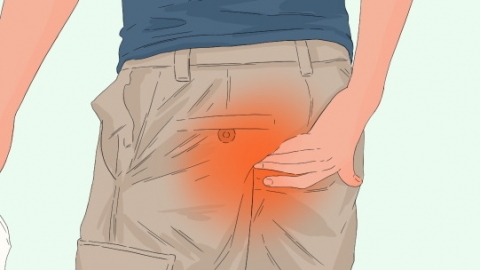What is a fleshy growth in the anus?
Anal lumps may be caused by external hemorrhoids, prolapsed internal hemorrhoids, rectal polyps, perianal abscesses, genital warts, and other conditions. These can be improved through dietary adjustments, maintaining hygiene, medication, or surgical intervention. If the lump increases in size, pain worsens, or bleeding occurs, prompt medical attention is necessary.
1. External Hemorrhoids: Prolonged sitting or constipation can lead to congestion and dilation of the venous plexus around the anus, forming a protruding lump. These are usually not significantly painful but may cause a sensation of heaviness or moisture in the anal area. It is recommended to avoid prolonged sitting or standing, consume more fiber-rich foods, maintain smooth bowel movements, and clean the anal area with warm water after defecation.
2. Prolapsed Internal Hemorrhoids: As internal hemorrhoids progress, they may protrude from the anus during bowel movements or even while walking, forming soft lumps. This condition may be accompanied by rectal bleeding and anal itching. It is advisable to avoid spicy and irritating foods, establish regular bowel habits, gently push the prolapsed tissue back into place after defecation, and minimize friction.

3. Rectal Polyps: Chronic inflammation or fecal irritation can cause hyperplasia of the rectal mucosa, leading to polyp formation. Some polyps may protrude externally and appear as fleshy lumps, possibly accompanied by mucus in stool or a feeling of incomplete evacuation. Under medical guidance, medications such as mesalamine suppositories, compound azulene suppositories, or sulfasalazine enteric-coated tablets may be used to relieve symptoms.
4. Perianal Abscess: Infection of sebaceous glands or hair follicles around the anus can result in purulent inflammation, forming a cystic lump with redness, swelling, and significant pain that worsens upon pressure. Under medical supervision, medications such as cefixime dispersible tablets, metronidazole tablets, or potassium permanganate solution may be used to alleviate symptoms.
5. Genital Warts (Condyloma Acuminata): Caused by human papillomavirus (HPV) infection, these manifest as cauliflower-like or papillary growths on the perianal skin or mucosa, possibly accompanied by itching, ulceration, or bleeding. Under medical guidance, topical treatments such as imiquimod cream, podophyllotoxin tincture, or interferon gel may be used to manage symptoms.
Maintain cleanliness and dryness of the anal area, wear loose-fitting, breathable cotton underwear, follow a light and easily digestible diet, drink plenty of water, avoid spicy and greasy foods, and develop healthy bowel habits to support perianal health.





